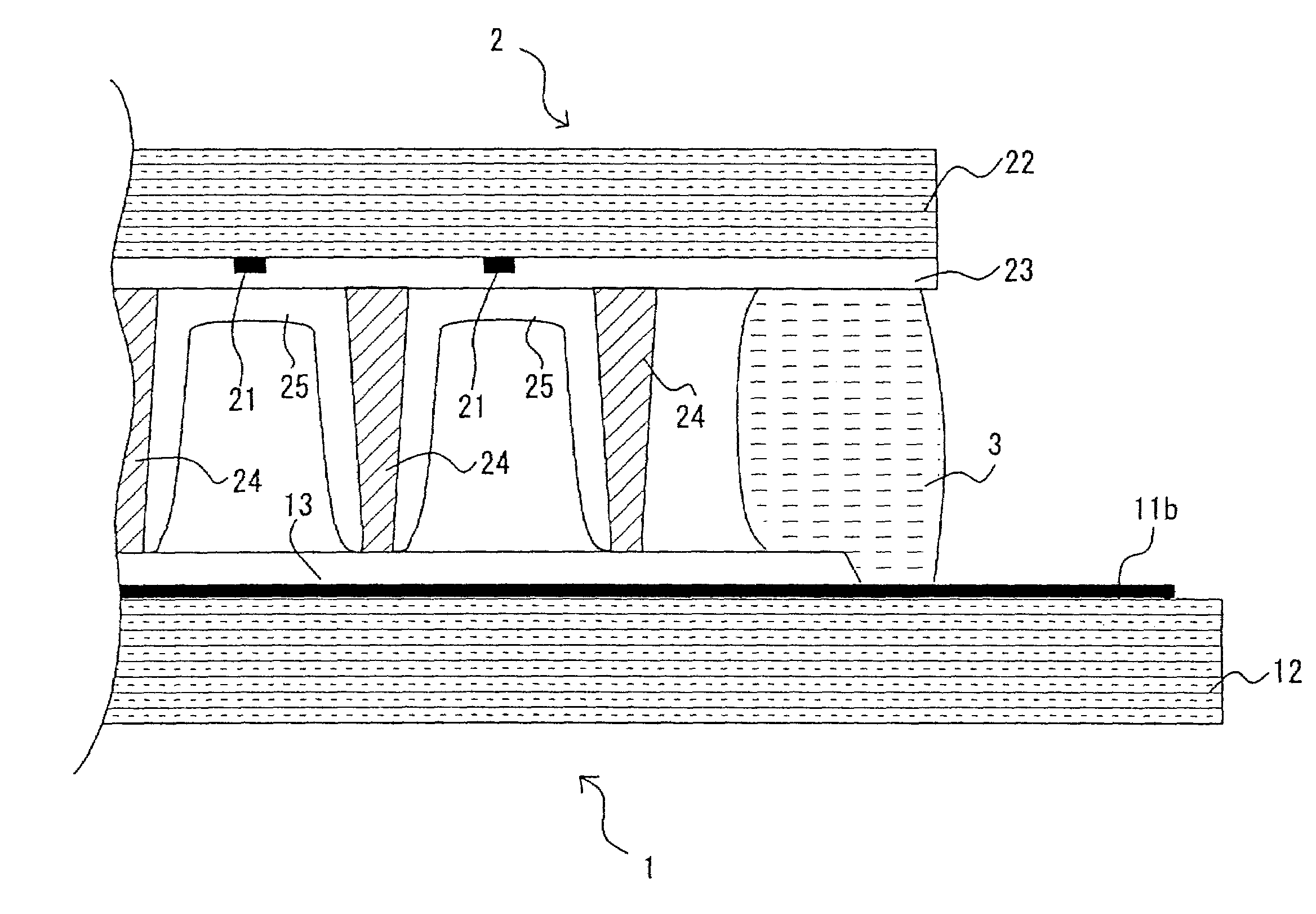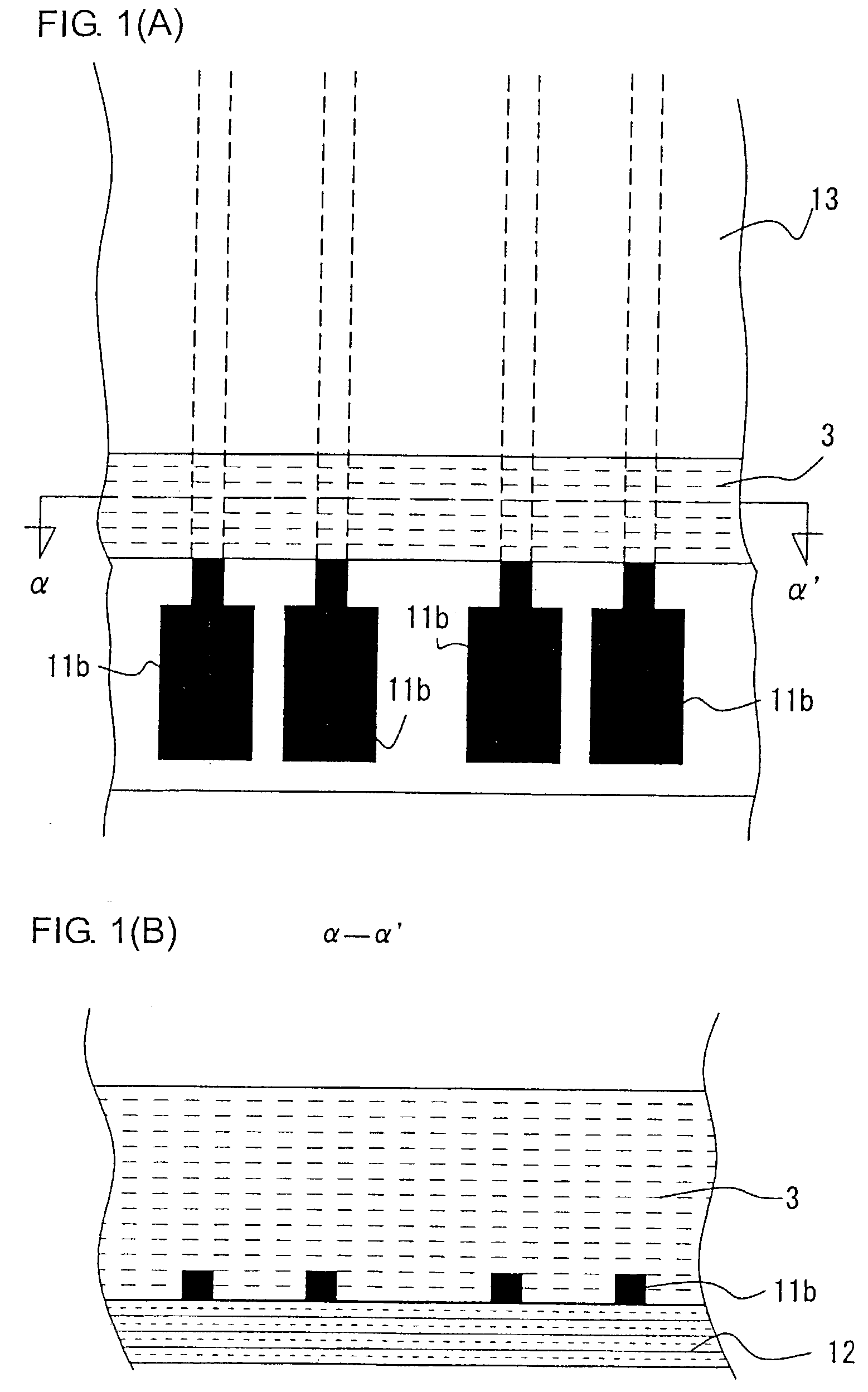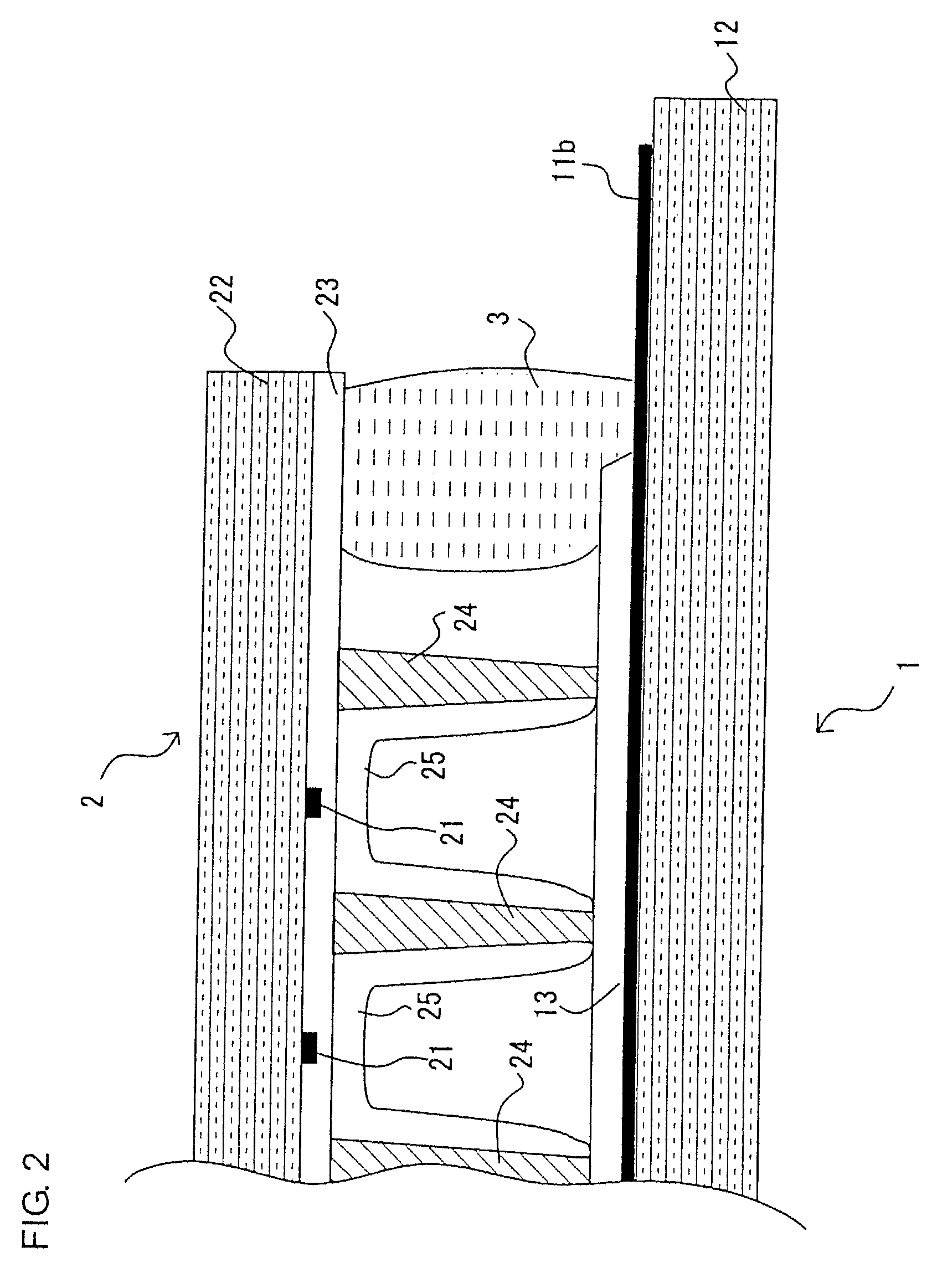Plasma display panel having sealing structure
a technology of plasma display panel and sealing structure, which is applied in the manufacture of electrode systems, electric discharge tubes/lamps, and address electrodes, etc., can solve the problem that the discharge space cannot be kept gas-tightly sealed
- Summary
- Abstract
- Description
- Claims
- Application Information
AI Technical Summary
Benefits of technology
Problems solved by technology
Method used
Image
Examples
first embodiment
[0026]A plasma display panel according to a first embodiment of the present invention will hereinafter be described with reference to FIGS. 1(A), 1(B) and 2. FIGS. 1(A) and 1(B) are a top view and a sectional view, respectively, illustrating major portions of a front panel of the plasma display panel according to this embodiment, and FIG. 2 is a sectional view illustrating major portions of the plasma display panel according to this embodiment.
[0027]As shown, the plasma display panel according to this embodiment includes a front panel 1 having pairs of main electrodes 11 for display discharge, and a rear panel 2 having address electrodes 21 for address discharge, like the conventional plasma display panel. The front panel 1 and the rear panel 2 are disposed in spaced opposed relation, and a sealing glass member 3 is provided between the front panel 1 and the rear panel 2 in direct contact with the electrodes without intervention of a dielectric layer 13 to define a sealed discharge ...
second embodiment
[0040]Although the plasma display panel according to the first embodiment is constructed such that the opposite end portions of the bus electrodes 11b are not covered with the dielectric layer 13 and the sealing glass member 3 is provided in direct contact with the opposite end portions of the bus electrodes 11b, a plasma display panel according to a second embodiment of the present invention is constructed such that apertures β are formed in the dielectric layer 13 to partly expose the opposite end portions of the bus electrodes 11b and the sealing glass member 3 is provided as filling the apertures β as shown in FIGS. 3(B) and 4. Thus, the sealing glass member 3 is disposed on the opposite end portions of the bus electrodes 11b, and portions 13′ of the dielectric layer 13 are still present on the opposite end portions of the bus electrodes 11b. Therefore, the discharge space can be kept gas-tightly sealed by the sealing glass member 3, and the dielectric layer portions 13′ dispose...
example 1
[0043]Cr, Cu and Cr films were formed on a front panel 1 by the sputtering method, and patterned for formation of bus electrodes 11b. Then, SiO2 was deposited to a thickness of 5.0 μm over the bus electrodes 11b under the following conditions by the plasma CVD method by means of a plasma CVD device of parallel plate type to form a dielectric layer 13 in a region as shown in FIG. 2. Subsequently, MgO was deposited to a thickness of 1.0 μm on the dielectric layer 13 by the vapor deposition method to form a protective film 14.
[0044]
Introduced gas and flow rate:SiH4 / 900 sccmIntroduced gas and flow rate:N2O / 9000 sccmRadio frequency output:2.0 kWSubstrate temperature:400° C.Vacuum degree:3.0 Torr
[0045]Then, a glass paste having a softening point of 430° C. was applied in a region of a sealing glass member 3 as shown in FIG. 2 by the dispenser method, and baked at 500° C. The front panel 1 and a rear panel 2 were baked at 450° C. to be combined in opposed relation. Then, a discharge space ...
PUM
 Login to View More
Login to View More Abstract
Description
Claims
Application Information
 Login to View More
Login to View More - R&D
- Intellectual Property
- Life Sciences
- Materials
- Tech Scout
- Unparalleled Data Quality
- Higher Quality Content
- 60% Fewer Hallucinations
Browse by: Latest US Patents, China's latest patents, Technical Efficacy Thesaurus, Application Domain, Technology Topic, Popular Technical Reports.
© 2025 PatSnap. All rights reserved.Legal|Privacy policy|Modern Slavery Act Transparency Statement|Sitemap|About US| Contact US: help@patsnap.com



